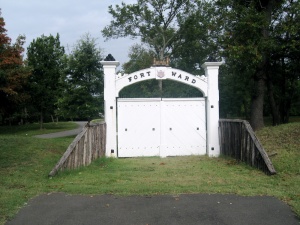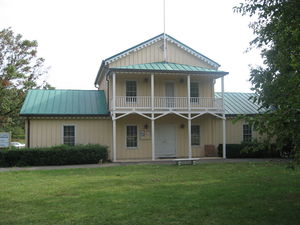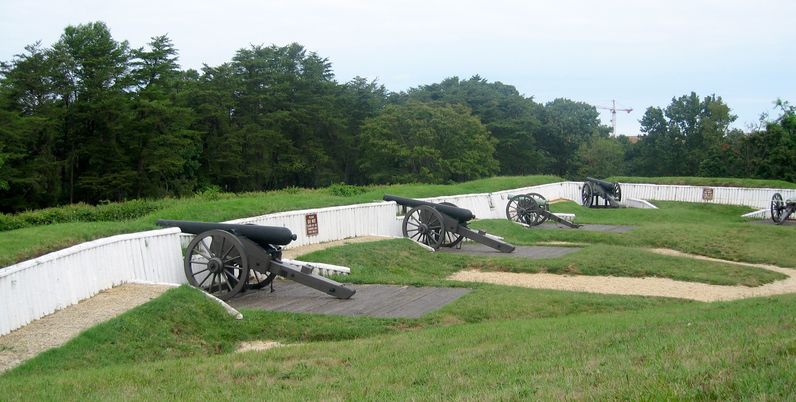Fort Ward (1)
|
Fort Ward (1) (1861-1865) - Built during the U.S. Civil War as a part of the defense system of Washington D.C. and was named for Commander James H. Ward, the first Union naval officer to die in the U.S. Civil War. Construction began in July 1861, after the Union Army's defeat at the Battle of First Bull Run (First Manassas) and was completed in September 1861. The Fort was abandoned in December 1865 after the close of the U.S. Civil War. Fort Ward HistoryOne of the ring of Union fortifications surrounding Washington DC during the U.S. Civil War, see Washington DC Fort Ring. Fort Ward was also one of 33 forts on the Virginia side of the Potomac River that made up an outer defense line for Washington DC known as the Arlington Line. The initial earthwork fort had a perimeter of 540 yards and emplacements for 24 guns. After the Battle of Second Bull Run, Fort Ward was scheduled for rebuilding beginning in 1863. When the war ended in April 1865, the enlarged fort had a perimeter of 818 yards and emplacements for 36 guns. A 17 May 1864 report from the Union Inspector of Artillery noted the following: "Fort Ward, Major Hemingway commanding.–Garrison, three companies First Connecticut Heavy Artillery– 1 major, 12 commissioned officers, 1 ordnance-sergeant, 401 men. Armament, two 10-pounder Parrotts, five 4_- inch ordnance, five 32-pounder sea-coast, six 24- pounder siege guns, one 100-pounder Parrott, one 24-pounder Coehorn mortar, seven 8-inch siege mortars. Magazines, three; two serviceable, one unserviceable; new ones being built. Ammunition, full supply and serviceable. Implements, complete and serviceable (but seven guns of this work were mounted and ready for action; work not completed). Drill in artillery, fair. Drill in infantry, ordinary. Discipline, fair. Garrison is sufficient for the work." Throughout the Civil War Fort Ward served as a deterrent and never came under Confederate attack. Current StatusIn 1961, to commemorate the Civil War Centennial, the City of Alexandria undertook the partial restoration and preservation of Fort Ward. An archaeologist and historian were hired to ensure that the project was completed according to professional standards. The Northwest Bastion was selected for restoration while the extant walls were preserved. The archaeological field work continued through 1962, when the actual restoration work began. The goal was to utilize authentic material to return the Northwest Bastion of the fort to its 1864 appearance, including the cannons. The weapons were manufactured based upon the 1864 table of armament for the fort. The fort, museum and park opened to the public on May 30, 1964. Fort Ward has been cited as the best Civil War restoration/preservation project in the mid-Atlantic region, as well as the flagship of the Defenses of Washington. Through continued preservation efforts, Fort Ward’s earthen walls are 90-95% intact although erosion continues to plague the fort site as it did in the 1860s. Trees in the fort have been left in place since their roots provide stability to the earthen structure. To combat erosion caused by visitors walking directly on the walls of the fort, carryovers have been constructed to provide visitor access to the interior of the fort. To provide improved handicapped access without compromising the historic site, a bridge was constructed through an existing cut in the fort walls.
See Also:
Sources:
Links: Visited: 4 Sep 2006 Picture Gallery
| |||||||






